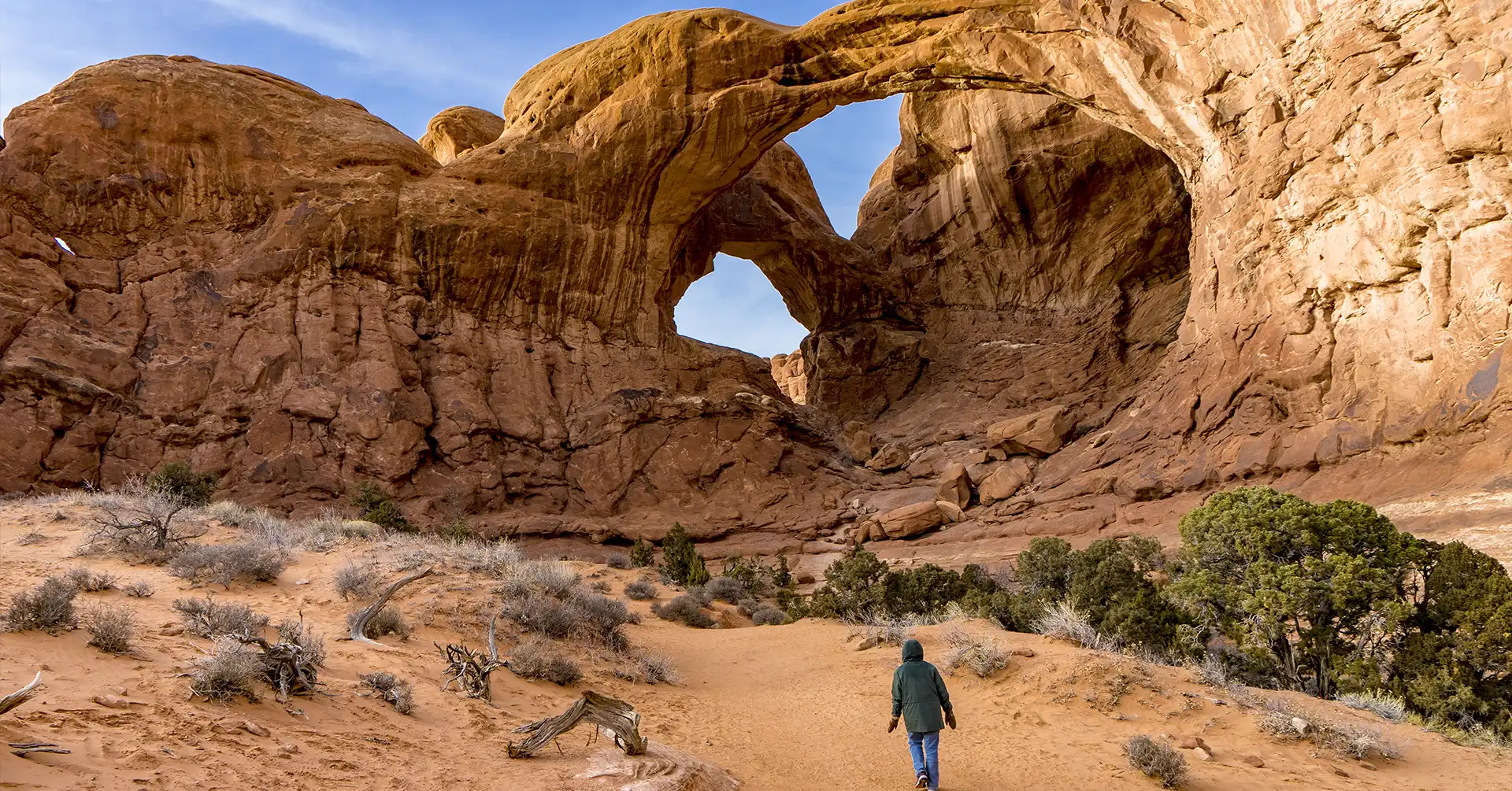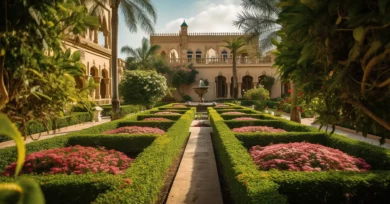Utah is home to some of the most stunning national parks in the United States. Visitors from around the world travel to experience the breathtaking beauty of Utah’s natural landscapes, stretching from Arches to Zion. These parks offer a unique blend of dramatic rock formations, vibrant desert ecosystems, and towering canyons.
Utah’s National Parks: An Overview
Utah’s national parks, also known as the Mighty Five, include Arches, Zion, Bryce Canyon, Capitol Reef, and Canyonlands. Each park boasts its own distinct features and natural wonders, providing endless opportunities for adventure and exploration. From the famous rock arches at Arches National Park to the stunning cliffs of Zion National Park, these parks offer a variety of sights and activities.
Importance of Preserving Natural Landscapes
Preserving the natural beauty of Utah’s national parks is crucial for both current and future generations. These pristine environments not only provide habitats for diverse plant and animal species, but also offer humans the chance to connect with nature and experience the serenity of the outdoors. Conservation efforts ensure that the parks, from Arches to Zion, remain protected and intact for visitors to enjoy for years to come. By visiting responsibly and respecting the natural surroundings, we can help maintain the delicate balance of these landscapes.
Geographical Wonders of Utah
Utah is home to a variety of stunning natural features that draw visitors from around the world. Its geographical wonders are spread across its national parks and monuments, offering an array of landscapes and ecosystems to explore. From the famous arches to Zion’s majestic canyons, here’s what makes Utah’s geography so unique.
The Varied Landscapes and Ecosystems
Utah is renowned for its diverse landscapes. You can experience everything from red rock deserts to alpine forests, all within a relatively short distance. The state is known for its arches, canyons, and hoodoos (tall, thin rock spires), which are found in its various national parks like Arches and Bryce Canyon.
The natural beauty of Utah includes stunning rock formations such as the ones in Arches National Park, where you can see iconic formations like Delicate Arch. In Zion National Park, you can marvel at towering cliffs and lush valleys. These parks offer a unique combination of
desert, forest, and riparian (riverbank) ecosystems that support a rich variety of plant and animal life.
Climate and Environmental Factors
Utah’s climate varies greatly across the state due to its varied elevations and landscapes. In general, the state experiences hot summers and cold winters, but the specific conditions can change depending on where you are. For example, in the lower elevations near Moab, you’ll find a desert climate with hot summers and mild winters. Meanwhile, higher elevations in places like Zion National Park can have cooler temperatures and more precipitation.
These different climate zones help support a range of ecosystems. From the dry, sandy soils in Arches to the wetter environments in Zion, you can see how the climate affects the landscape and the types of plants and animals that can thrive there. This diversity makes Utah a haven for outdoor enthusiasts and nature lovers.
Discovering Arches National Park
Arches National Park is one of Utah’s most famous natural attractions, known for its stunning rock formations and beautiful landscapes. The park’s unique geological features draw visitors from around the world, offering opportunities for adventure and exploration.
Iconic Rock Formations: Delicate Arch and More
The most famous attraction in Arches National Park is Delicate Arch, a stunning natural arch that has become a symbol of the park. This incredible rock formation stands alone, arching over a beautiful desert backdrop. Besides Delicate Arch, there are many other awe-inspiring arches to explore, such as Landscape Arch, Double Arch, and Balanced Rock. Each formation has its own unique charm and story, providing a visual feast for visitors.
Trails and Hiking Adventures
Arches National Park is a paradise for hikers, offering a range of trails for all skill levels. The hike to Delicate Arch is a must-do, providing amazing views along the way. Other popular trails include the Devils Garden Loop, which showcases several arches and other interesting rock formations. Whether you’re a casual walker or an experienced hiker, you’ll find trails that offer a chance to experience the park’s beauty up close.
Wildlife and Vegetation in Arches
While Arches National Park is known for its rock formations, it is also home to a variety of wildlife and plant species. Keep an eye out for desert bighorn sheep, foxes, and a variety of birds. The park’s vegetation includes unique desert plants such as prickly pear cactus and juniper trees. Exploring Arches to Zion gives you the chance to appreciate the delicate balance of nature in this stunning desert landscape.
Zion National Park: A Journey Through Nature
Zion National Park is one of Utah’s most breathtaking natural treasures, showcasing a range of beautiful landscapes and diverse wildlife. Whether you’re interested in scenic views, adventurous hikes, or the park’s rich geology, Zion has something for everyone.
The Majestic Zion Canyon
Zion Canyon is the heart of the park, known for its towering red rock cliffs and lush green valleys. The Virgin River cuts through the canyon, creating a stunning natural landscape. As you explore the area, you’ll be surrounded by vibrant colors and unique rock formations. Don’t forget to take in the iconic views from locations like the Court of the Patriarchs and the Great White Throne.
Popular Hikes: Angels Landing, The Narrows, and More
One of the most exciting ways to experience Zion is by hiking its famous trails. Angels Landing is a challenging hike that rewards you with panoramic views of Zion Canyon from the summit. Another must-do hike is The Narrows, where you can walk through the Virgin River in a deep, narrow gorge surrounded by towering walls. These hikes offer a truly memorable experience as you travel from arches to Zion.
Biodiversity and Geology of Zion
Zion National Park is home to a wide variety of plant and animal species. As you move through the park, you’ll encounter everything from desert shrubs to lush hanging gardens. Keep an eye out for wildlife like deer, bighorn sheep, and even the occasional mountain lion.
Bryce Canyon National Park
When you explore Bryce Canyon National Park, you’ll step into a landscape like no other. Known for its unique geological formations called hoodoos, the park offers a surreal experience with its striking orange and red spires. Walking through this park feels like a journey from “arches to Zion”—you’ll find yourself surrounded by rock structures that seem to defy gravity.
The Unusual Hoodoos and Rock Structures
Bryce Canyon is famous for its hoodoos, which are tall, thin spires of rock formed by erosion over millions of years. These unusual structures create a visually stunning landscape that changes colors throughout the day, depending on the sunlight. As you wander the trails, you’ll find yourself amazed by the different shapes and sizes of the hoodoos.
Scenic Vistas and Lookouts
The park offers several lookout points where you can enjoy panoramic views of the hoodoos and other rock formations. These vistas provide incredible opportunities for photography and
appreciation of the park’s natural beauty. Sunrise and sunset are the best times to take in the vibrant colors of the landscape, creating memorable experiences for visitors.
Wildlife and Plant Species
In addition to its stunning rock formations, Bryce Canyon is home to diverse wildlife and plant species. You might spot mule deer, pronghorn, or even the occasional mountain lion if you’re lucky. The park is also known for its pine trees, sagebrush, and colorful wildflowers, which add to the area’s natural charm. Exploring Bryce Canyon lets you connect with nature and discover the rich biodiversity the park has to offer.
Capitol Reef National Park
Capitol Reef National Park is a hidden gem in Utah’s national park system. The park offers a mix of historical sites, striking natural beauty, and unique geological formations. This area is a great stop when you’re traveling from Arches to Zion.
The Historic and Natural Beauty of Capitol Reef
The heart of Capitol Reef National Park is the Waterpocket Fold, a 100-mile long wrinkle in the Earth’s crust. This geological formation creates a dramatic landscape filled with cliffs, domes, and canyons. The park is named after the large, white domes of Navajo Sandstone that resemble the U.S. Capitol building.
Orchards dot the park, providing colorful and fragrant scenery in spring and summer. Visitors can pick their own fruit in season, offering a fun and tasty experience while enjoying the surroundings.
Notable Landmarks and Trails
The park offers many notable landmarks and trails to explore. The Hickman Bridge Trail is a popular hike that leads to a natural stone arch, showcasing the stunning rock formations the park is known for. Another well-liked trail is the Grand Wash Trail, which features narrow canyons and towering walls.
For a breathtaking drive, the Scenic Drive takes you through the heart of the park, showcasing its diverse landscapes and offering easy access to several trailheads.
Insights into Indigenous History and Settler Heritage
Capitol Reef’s history goes beyond its natural wonders. The park is home to ancient petroglyphs left by the Fremont people, showcasing their culture and connection to the land. Visitors can see these rock art images along the cliff walls, a fascinating glimpse into the past.
Early settlers also left their mark on the park. The Gifford Homestead, a historic farmhouse in the park, offers insight into the lives of early pioneers who made Capitol Reef their home. Visitors can tour the homestead and purchase homemade goods like pies and jams, adding a touch of local history to their visit.
Capitol Reef National Park provides a unique mix of natural beauty, outdoor adventure, and historical intrigue. As you journey from Arches to Zion, make sure to stop by Capitol Reef for an unforgettable experience.
Conclusion
Exploring the journey from Arches to Zion and beyond offers a diverse experience of Utah’s national parks, each with its unique natural beauty and historical significance. From the red rock arches of Arches National Park to the lush valleys of Zion, you can witness the marvels of the Earth’s geology and breathtaking landscapes. Capitol Reef stands out with its orchards, historic homesteads, and remarkable rock formations, offering a peaceful retreat and insight into the region’s indigenous and settler history. Whether you’re hiking, exploring scenic drives, or taking in the cultural sites, Utah’s national parks present an incredible adventure for nature lovers and history buffs alike. As you journey through these parks, remember to cherish and respect the natural wonders around you for future generations to enjoy.
Also Read:






